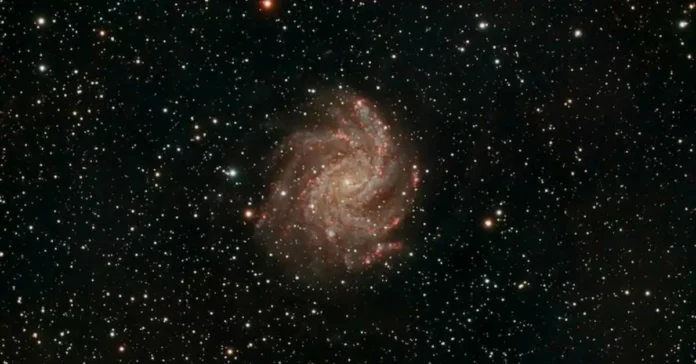Located between 425 and 800 million light‑years from Earth, Quipu is a newly mapped cosmic superstructure traced via X‑ray-detected galaxy clusters. It spans an astounding ≥400 megaparsecs (~1.3 billion ly) and contains roughly 2 × 10¹⁷ solar masses (~200 quadrillion Suns), making it the largest known structure in the local cosmos
Named after the Andean knotted recording devices (quipus), this filamentary network is visually striking—one long main strand with smaller side branches
📊 How It Was Detected
- Using data from the ROSAT X‑ray satellite and CLASSIX cluster survey, researchers mapped galaxy clusters via an algorithmic “friends-of-friends” method
- Quipu comprises 68 galaxy clusters, one of five major nearby superstructures (including Shapley, Hercules, Serpens-Corona Borealis, Sculptor-Pegasus), which collectively host ~45% of galaxy clusters, 30% of galaxies, and 25% of matter in ~13% of the surveyed volume
🧭 Why This Matters
1. 📐 New Scale of Cosmic Structure
Quipu surpasses earlier records like the Sloan Great Wall, offering new benchmarks for structure formation
2. 🔍 Implications for Cosmology
Its massive gravitational influence affects cosmic microwave background features (via the Integrated Sachs–Wolfe effect), light lensing, and local galaxy flow—critical for refining the Hubble constant
3. ⚖️ Tests Universe Uniformity
Quipu challenges the cosmological principle (that matter is roughly uniform on large scales), prompting deeper investigation into the limits of cosmic homogeneity
🔮 What’s Next?
- Further mapping: Deeper surveys may unveil even larger structures beyond the local universe nypost
- CMB analyses: Measuring Quipu’s impact on cosmic microwave background using Planck and future missions
- Simulation checks: Comparing with ΛCDM cosmology to see how such filaments form and evolve .
- Future telescope roles: Observatories like Euclid and JWST may provide higher-resolution maps of similar grand structures .
✅ Bottom Line
Quipu, covering 1.3 billion light-years and weighing in at 200 quadrillion Suns, redefines the scale of cosmic architecture in our nearby universe. Its discovery opens pivotal new avenues in understanding cosmic structure, evolution, and the gravitational tapestry that shapes everything from galaxy distribution to measurements of the universe’s expansion.



